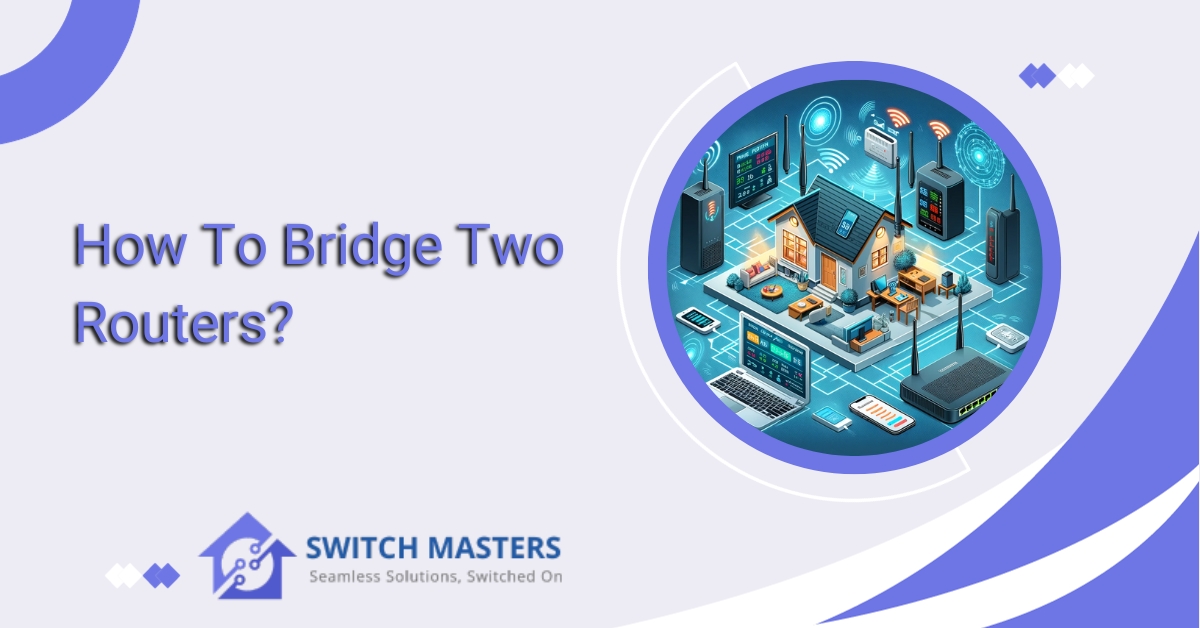Discover the essential steps on how to bridge two routers seamlessly. Optimize your network coverage and enhance internet connectivity with this step-by-step guide. Unlock a world of improved connectivity for a smoother online experience.
Introduction
This guide will provide you with a comprehensive explanation of “How to Bridge Two Routers.” By connecting two routers in a bridge configuration, you can increase the coverage of your network significantly, providing a seamless internet experience throughout your property.
You can easily bridge two routers to unlock the full potential of your network infrastructure with this step-by-step exploration, whether you wish to eliminate dead zones or improve network performance. Let us embark on this journey to bridge the digital divide and develop a robust and unified network for your connectivity needs.
Table of Contents
What is a Bridge?
In the expansive realm of computer networking, the term “bridge” plays a crucial role in connecting various segments of a network. As with a physical bridge, a digital bridge facilitates the seamless exchange of information between different segments of a network. We will embark on a journey to discover the mystery behind the digital bridge and to understand its significance in the field of networking as we explore its significance.
Defining the Digital Bridge:
Networking terms refer to bridges that serve as connections between two or more network segments, thereby creating a single, unified network. The OSI model posits a bridge as functioning at the data link layer (Layer 2), as opposed to a router, which operates at the network layer. By filtering and forwarding data frames based on MAC addresses, it enhances data transmission efficiency and security.
Key Functions of a Bridge:
Segmentation and Isolation:
This helps minimize network congestion and isolates problems, preventing them from affecting the entire network. Bridges divide large networks into smaller segments, known as collision domains.
Filtering Traffic:
A bridge’s ability to inspect MAC addresses allows it to selectively forward data frames to the intended destinations to optimize network bandwidth and improve the performance of the network as a whole.
Collision Prevention:
Bridges must play a critical role in preventing collisions within a network. By separating collision domains, bridges contribute to a more efficient and reliable data transfer process.
Connecting Different Network Types:
To integrate diverse components within a cohesive network infrastructure, bridges are employed in complex network setups to link segments utilizing different technologies or protocols.
Enhancing Security:
Bridges add an additional layer of security to networks by controlling the flow of data based on the MAC address. They prevent unauthorized access to a network and mitigate the risk of unauthorized access.
Real-World Analogy:
Consider an analogy in which a bustling city is divided by a river, with people eager to communicate and share resources. The bridge represents the interconnected network segments, enabling the seamless exchange of information between them.
How To Bridge Two Routers?

When it comes to the vast landscape of the digital world, a reliable and robust internet connection is essential. It is sometimes necessary to bridge two routers to cover every corner of your house or business. That’s why the concept of bridging two routers is so important. In this guide, we will embark on a journey to seamlessly connect two routers, ensuring a broader network coverage and a smoother internet experience.
Step 1: Gather Your Tools
We will begin our networking adventure by gathering the necessary tools. Make sure your router supports bridge mode – this information can usually be found in the user manual or online documentation. You’ll need two routers, Ethernet cables, and a computer or laptop.
Step 2: Find the Perfect Spot
Once you have your tools, locate the routers strategically. Think about the layout of your room and aim for a central location for maximum coverage. Ensure that you have access to both routers during installation.
Step 3: Connect to Router 1
Using an Ethernet cable, connect your computer to the first router. Open a web browser and enter the router’s IP address in the address bar. The router’s IP address is usually located on a sticker on the device itself or in the router’s manual. Log in using the credentials provided.
Step 4: Configure Router 1
Once logged in to your router, navigate to the router settings. Select “Wireless Bridge,” “Bridge Mode,” or “Repeater Mode.” Enable this mode, and you may need to specify the MAC address of a second router. Save these changes and restart your router.
Step 5: Connect to Router 2
Once your computer is connected to the second router with an Ethernet cable, repeat the process of accessing the router’s settings by typing its IP address into your web browser. Log in to the second router and configure it to operate in bridge mode as well. Save and restart the second router after making the changes.
Step 6: Check the Connection
Upon restarting both routers, wait for them to establish a connection. You can check the status lights on each router to determine if a connection has been established. Check the internet connection in different areas of your living space to ensure that there is a good signal.
FAQ’s
Can you bridge 2 different routers?
Having a secondary router that is equipped with WDS support allows you to “bridge” your network’s reach by combining it with your existing router. With the rise of mesh Wi-Fi systems, bridging two routers within a single network may no longer be as prevalent as it once was, but it remains an effective and viable method of enhancing network accessibility, particularly in more expansive environments.
What does bridge mode do on a router?
The Bridge mode within a router is a configuration option that deactivates the router’s Wi-Fi broadcast, which transforms it into a bridge between two Wi-Fi networks.
Is bridge mode the same as a repeater?
In contrast to wireless bridging, which involves establishing a wireless connection between two or more LANs or WANs, repeaters serve to extend the range of wireless signals without amplifying them. While a repeater does include wireless bridging functionality, it is essential to note that the purpose and usage of the repeater differ. Therefore, it cannot be used to substitute for the dedicated function of wireless bridging.
Does bridge mode slow down the internet?
All wirelessly connected devices on the network experienced a decrease in internet speed when configured in bridge mode.
Can you bridge routers wirelessly?
When you use the Wireless Bridge mode, your wireless router will directly connect with a secondary wireless access point, enabling you to extend the range of the wireless network broadcast by your primary wireless router.
Conclusion
The integration of two routers is a practical solution if you wish to optimize internet connectivity and network coverage within your residence or workplace. Users can effectively create a unified and extended network by following the instructions provided, mitigating the limitations imposed by a single router by following the step-by-step guide provided. As a result of this seamless integration, not only is the network more efficient, but it ensures a more consistent and reliable internet experience throughout the entire facility.
A valuable skill for individuals seeking to maximize their network infrastructure continues to be the ability to bridge two routers as technology continues to evolve. Start your networking journey today, bridge those routers, and you will unlock a new world of enhanced connectivity. Happy networking!















